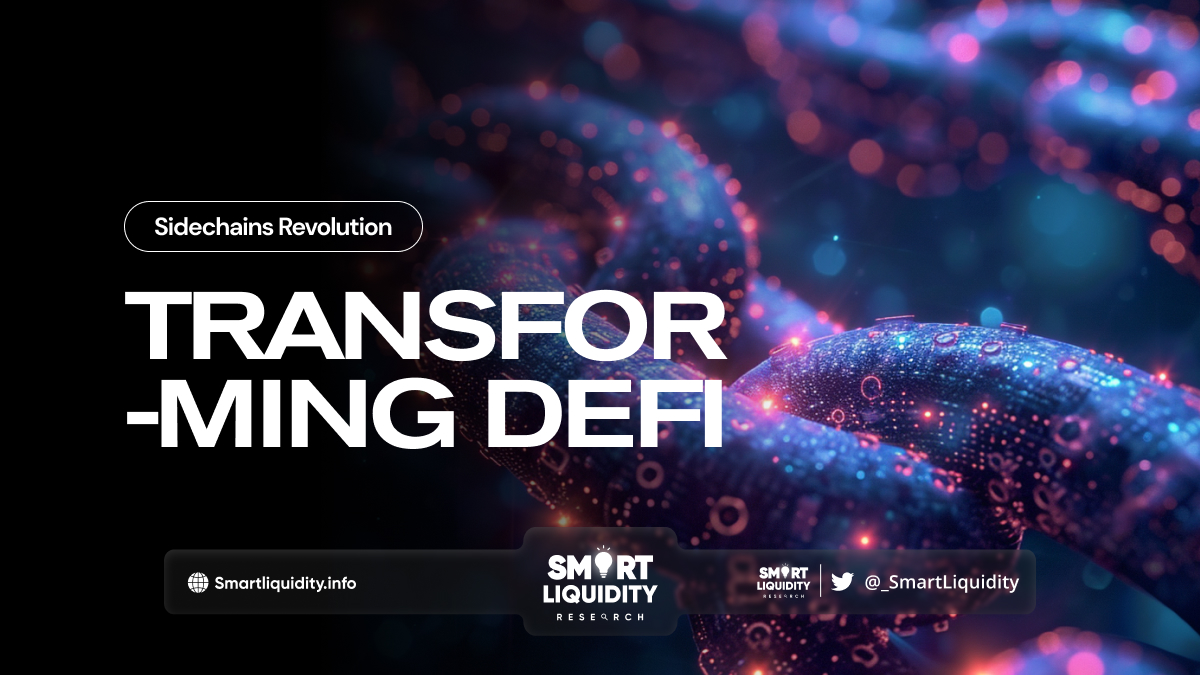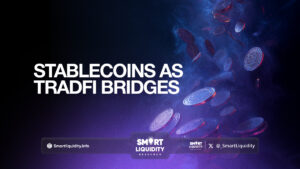Sidechains: A Game-Changer for Decentralized Finance


Sidechains, secondary blockchains tethered to a primary blockchain, have emerged as a solution poised to revolutionize DeFi by addressing critical challenges such as scalability, security, and interoperability. This article delves into the multifaceted role of sidechains and their transformative impact on the DeFi ecosystem.
Sidechains: Bridging the Gap Between Scalability and Security
Imagine a highway congested with traffic. The main chain, with its robust security, is like this busy road, processing transactions slowly but confidently. Sidechains, then, are like parallel lanes that connect to the main highway. They inherit the security of the main chain through regular checkpoints but operate with separate consensus mechanisms, allowing for faster, cheaper transactions. Users can seamlessly move assets between the chains, enjoying the best of both worlds: secure storage on the main chain and smooth, speedy transactions on the sidechain.
However, sidechains aren’t a silver bullet. Their security ultimately relies on the strength of the main chain, and bridging between chains can introduce complexity and potential vulnerabilities. Yet, they represent a powerful, innovative solution in the quest for scalable and secure blockchain ecosystems.
Diving into the Benefits of Sidechains for DeFi
The advantages of sidechains extend far beyond scalability improvements. These secondary chains introduce innovation by fostering experimentation with novel DeFi protocols and use cases. They empower developers to create specialized financial products and applications, enhancing the overall functionality and versatility of the DeFi ecosystem.
- Scalability Unleashed: Imagine clogged city streets suddenly transformed into a network of high-speed expressways. Sidechains handle DeFi transactions off the main chain, freeing up bandwidth and slashing transaction times. This means faster swaps, loans, and yield farming, all without the frustration of network congestion.
- Experimentation Playground: DeFi thrives on innovation, but upgrading established blockchains can be a slow and bureaucratic dance. Sidechains offer a sandbox for trying out new features and protocols without impacting the main chain. This fosters rapid development, leading to novel DeFi products and pushing the boundaries of what’s possible.
- Asset Interoperability Bridge: DeFi is a fragmented ecosystem, with assets locked in different blockchains. Sidechains act as interoperability bridges, enabling seamless movement of assets between chains. This unlocks a wider range of DeFi opportunities, allowing users to leverage assets across different protocols and maximize their yield potential.
- Enhanced Privacy: Some DeFi users value anonymity. Sidechains can offer enhanced privacy features compared to the main chain, allowing users to participate in DeFi activities without revealing their financial footprint. This caters to privacy-conscious individuals and opens up DeFi to a broader audience.
While sidechains are not a silver bullet, they offer a powerful tool to unlock the full potential of DeFi. By addressing scalability, fostering innovation, and enabling asset movement, sidechains pave the way for a faster, more efficient, and inclusive DeFi future.
Ensuring Trust and Interoperability with Mainchains
Building trust and maintaining interoperability with mainchains are critical challenges for sidechains. Here are some key approaches:
- Secure Pegging: Anchoring the sidechain’s state to the mainchain at regular intervals creates a “peg,” guaranteeing consistency and preventing double-spending. Different methods exist, like fraud proofs and validator consensus mechanisms, each offering varying levels of security and decentralization.
- Decentralized Bridge Governance: Trust in bridge operators, who facilitate asset movement between chains, can be a vulnerability. Implementing decentralized governance models, where token holders collectively control bridge operations, enhances trust and reduces censorship risk.
- Open-source Protocols: Transparency and community ownership are key to fostering trust. Open-sourcing sidechain protocols allows for public scrutiny and fosters collaboration in identifying and addressing vulnerabilities.
- Standardized Communication: Interoperability requires a common language for data transfer between chains. Developing standardized communication protocols, like cross-chain messaging formats, simplifies integration and enables seamless interaction between sidechains and mainchains.
- Incentive Mechanisms: Aligning the interests of sidechain and mainchain stakeholders incentivizes cooperation and ensures smooth interoperability. Reward systems for validators and bridge operators who maintain the peg and facilitate asset flow can be crucial in maintaining a healthy ecosystem.
By focusing on robust security measures, decentralized governance, open-source code, standardized communication, and aligned incentives, sidechains can build trust and ensure seamless interoperability with mainchains, paving the way for a truly interconnected and scalable blockchain future.
Real-World Adoption: Sidechains Powering the Future of DeFi
| Sidechain | DeFi Application | Benefits | Challenges |
| Polygon | Aave, Curve, SushiSwap | High transaction speed, low fees, asset interoperability | Centralized validator set |
| Avalanche | Pangolin, TraderJoe, BENQI | Fast finality, subnet customization, EVM compatibility | Complex subnet structure |
| Fantom | SpookySwap,, Liquid Driver | Scalable transactions, low fees, fast confirmation times | Less established ecosystem |
| Arbitrum | Uniswap | Optimistic rollup security, high transaction speed, low fees | Higher gas costs for initial deposit |
| Optimism | Synthetix, Kwenta | Optimistic rollup security, low fees, EVM compatibility | Higher gas costs for initial deposit |
As we can see, sidechains are already being used to power a wide range of DeFi applications, and their adoption is only likely to grow in the future. With their ability to offer faster transaction speeds, lower fees, and greater asset interoperability, sidechains have the potential to revolutionize the DeFi space.
Sidechains vs. Layer 2 Solutions: Understanding the Differences
| Feature | Sidechain | Layer 2 Solution |
| Security Model | Independent consensus mechanism (e.g., Proof-of-Stake, Proof-of-Authority) | Inherits security from the main chain through fraud proofs or state checkpoints |
| Transaction Speed & Fees | High throughput, low fees compared to the main chain | Varies depending on specific protocol, generally faster and cheaper than the main chain |
| Decentralization | Varies depending on the sidechain’s consensus mechanism; can be less decentralized than the main chain | Often inherits the decentralization level of the main chain, but some protocols may have centralized aspects |
| Interoperability | Requires dedicated bridges for asset movement between chains | Can leverage existing on-chain infrastructure for interoperability with the main chain |
| Smart Contract Functionality | Can support custom smart contracts | May have limited or specialized smart contract functionality compared to the main chain |
| Examples | RSK, Liquid Network, Polygon PoS | Optimism, Arbitrum, Loopring, Plasma |
| Suitability for: | High-transaction volume applications, privacy-focused use cases, experimentation with new features | Micropayments, high-frequency trading, DEX transactions, general DeFi applications |
Understanding these nuances is crucial for discerning which solution best fits the specific needs of DeFi applications.
Conclusion
In the ever-evolving landscape of decentralized finance, sidechains emerge as a beacon of innovation, effectively addressing the long-standing challenges of scalability, security, and interoperability. As the industry embraces these secondary blockchains, we witness a paradigm shift, propelling the DeFi ecosystem into a realm of unprecedented possibilities. With their real-world adoption on the rise, sidechains are undoubtedly a game-changer, steering decentralized finance towards a future defined by efficiency, security, and limitless potential.




